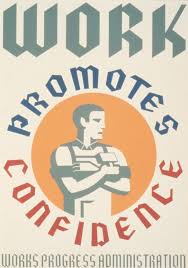

Through the chaos and economic downturn of the Great Depression, the New Deal was an attempt by the United States government to offer American society a breath of fresh air. Focused around what many have dubbed as the "three R's" (reform, recovery, and relief), the New Deal was a series of liberal social and economic programs installed by the government in an attempt to repair the economy and calm the citizens who had gone into a frenzy after many of them lost their jobs and money. While each of these three R's carried large importance and presence within the New Deal in their own respect, reform seemed to be at the very core of the whole program, as its various social and economic changes that it incorporated into American society seemed to be of the greatest importance to the American government in their efforts to repair national life.

Firstly, the New Deal installed a series of new economic reforms into American society that provided the nation with several hundreds of millions of dollars for relief programs and funded public and civil works. Such money grants were given by the Civil Works Administration as well as the Federal Emergency Relief Administration in order to facilitate the reconstruction of American economy and lifestyle as well as to boost American morale through opportunities for more impressive/extravagant public works. This also showed the relief programs' dependence on reform to a degree, highlighting the importance of reform to American recovery at the time. Furthermore, the government installed several bank-related reforms such as the Emergency Banking Act and the 1933 Banking Act in order to prevent banking crises and also passed the Securities Act of 1933 in order to guard the economy more effectively against large stock market crashes. President Franklin D. Roosevelt even declared bank holidays in order to prevent people from withdrawing money from untrustworthy or shaky banks, allowing him to see which banks were worth keeping in service and which insolvent ones to close.

Putting its economic effects to the side, the New Deal also had substantial effect socially to the United States and seemed to effect each social class with its various reforms. The lower class enjoyed new benefits such as the installment of the Social Security Act as well as the Fair Labor Standards Act of 1938 which put minimum wages and new maximum working hours into place and also provided for easier tracking and recognition of common people. New, more expansive labor unions were also put into place and the farmers were provided with insurance on their crops. As for the people who had a larger amount of money to lose (the middle and upper class), insurance programs were started up in order to avoid another large scale economic decline and the eventual removal of prohibition gave birth to a new revival of nightlife as well as the production of new jobs in the alcohol production/sale business. Franklin D. Roosevelt, who was president during much of the New Deal program, also made sure to project a confident, secure image during this time, as he understood the difficulty that many American citizens had to endure and used such an image to increase their drive for national rehabilitation.

Overall, while not excepted by all due to its liberal ideological roots, the New Deal was a good idea for the recovery and restoration of American society and economy after the devastation of the Great Depression. It had several components, however the effects of reform seemed to be the most substantial in both rebuilding what existed before and putting new systems into place in order to prevent a major economic disaster from ever disrupting the country's progress ever again. Overall it's reforms were innovative and many of its provisions still lie in a position of great importance to today's society.

